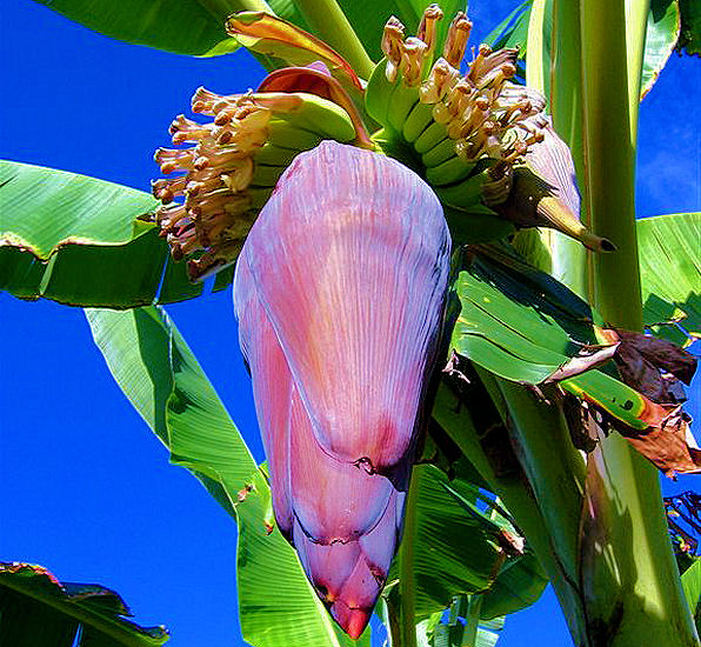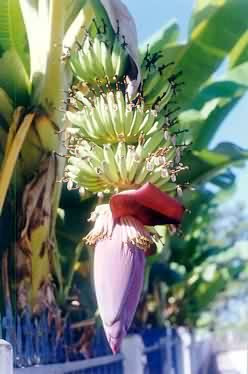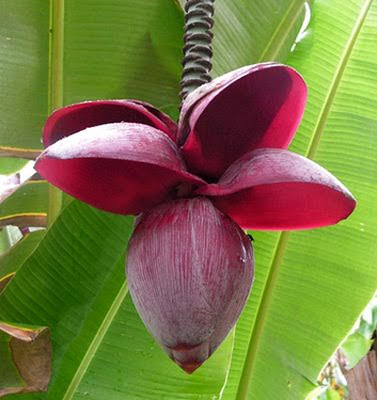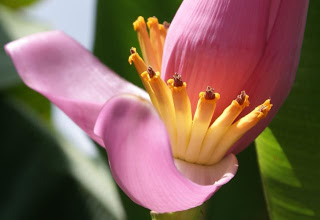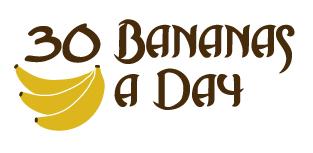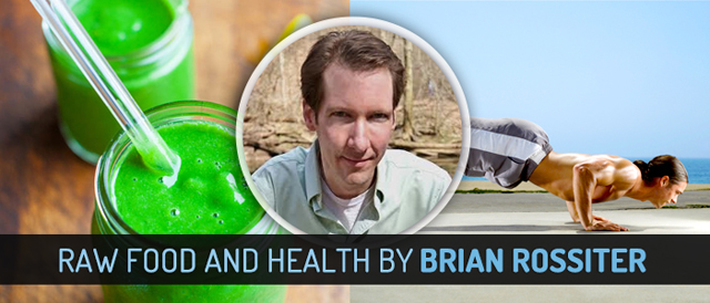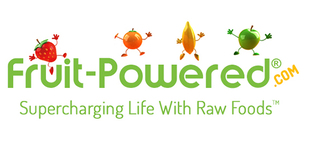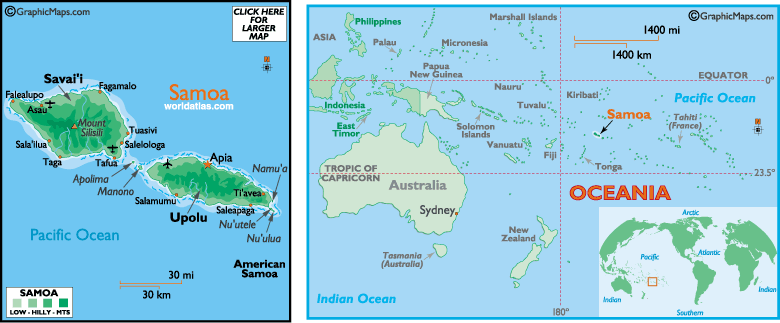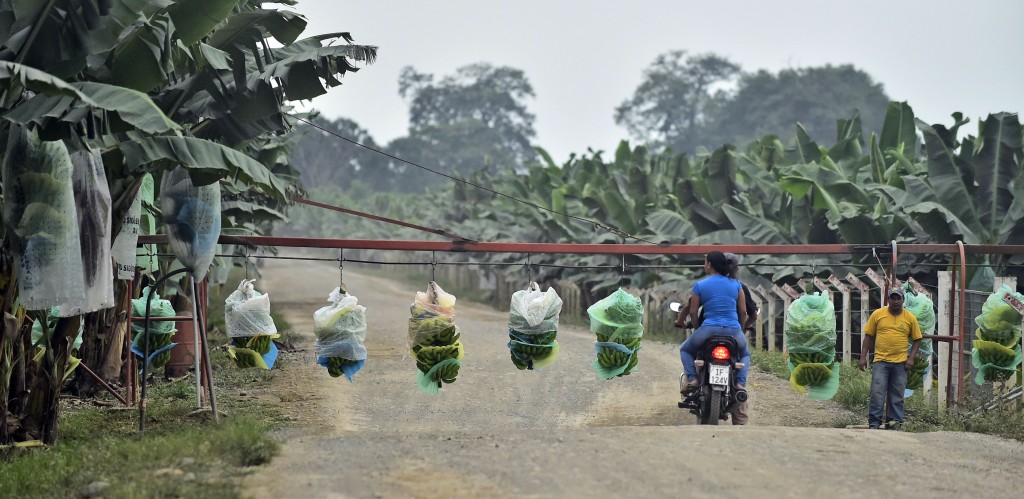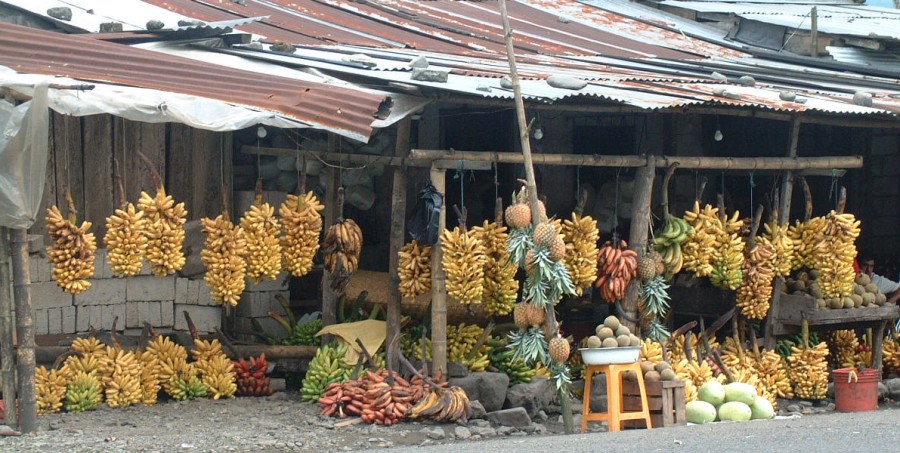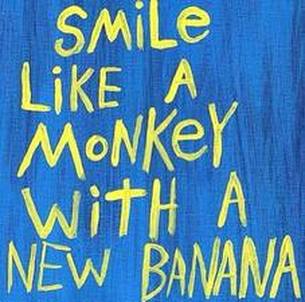Research has proven that just two bananas provide enough energy for a
strenuous 90-minute workout.
No wonder the banana is the number one fruit with the world’s leading athletes.
strenuous 90-minute workout.
No wonder the banana is the number one fruit with the world’s leading athletes.
Banana the Miracle Fruit
By Sina Anvari – Karenstan.net
This is interesting. After reading this, you’ll never look at a banana in the same way again. Bananas contain three natural sugars – sucrose, fructose and glucose combined with fiber. A banana gives an instant, sustained and substantial boost of energy.
Research has proven that just two bananas provide enough energy for a strenuous 90-minute workout. No wonder the banana is the number one fruit with the world’s leading athletes.
But energy isn’t the only way a banana can help us keep fit. It can also help overcome or prevent a substantial number of illnesses and conditions, making it a must to add to our daily diet.
DEPRESSION: According to a recent survey undertaken by MIND amongst people suffering from depression, many felt much better after eating a banana. This is because bananas contain tryptophan, a type of protein that the body converts into serotonin, known to make you relax, improve your mood and generally make you feel happier.
PMS: Forget the pills – eat a banana. The vitamin B6 it contains regulates blood glucose levels, which can affect your mood.
ANEMIA: High in iron, bananas can stimulate the production of hemoglobin in the blood and so helps in cases of anemia.
BLOOD PRESSURE: This unique tropical fruit is extremely high in potassium yet low in salt, making it perfect to beat blood pressure So much so, the US Food and Drug Administration has just allowed the banana industry to make official claims for the fruit’s ability to reduce the risk of blood pressure and stroke.
BRAIN POWER: 200 students at a Twickenham school ( England ) were helped through their exams this year by eating bananas at breakfast, break, and lunch in a bid to boost their brain power. Research has shown that the potassium-packed fruit can assist learning by making pupils more alert.
CONSTIPATION: High in fiber, including bananas in the diet can help restore normal bowel action, helping to overcome the problem without resorting to laxatives.
HANGOVERS: One of the quickest ways of curing a hangover is to make a banana milkshake, sweetened with honey. The banana calms the stomach and, with the help of the honey, builds up depleted blood sugar levels, while the milk soothes and re-hydrates your system.
HEARTBURN: Bananas have a natural antacid effect in the body, so if you suffer from heartburn, try eating a banana for soothing relief.
MORNING SICKNESS: Snacking on bananas between meals helps to keep blood sugar levels up and avoid morning sickness.
MOSQUITO BITES: Before reaching for the insect bite cream, try rubbing the affected area with the inside of a banana skin. Many people find it amazingly successful at reducing swelling and irritation.
NERVES: Bananas are high in B vitamins that help calm the nervous system..
Overweight and at work? Studies at the Institute of Psychology in Austria found pressure at work leads to gorging on comfort food like chocolate and chips. Looking at 5,000 hospital patients, researchers found the most obese were more likely to be in high-pressure jobs. The report concluded that, to avoid panic-induced food cravings, we need to control our blood sugar levels by snacking on high carbohydrate foods every two hours to keep levels steady.
ULCERS: The banana is used as the dietary food against intestinal disorders because of its soft texture and smoothness. It is the only raw fruit that can be eaten without distress in over-chroniclercases. It also neutralizes over-acidity and reduces irritation by coating the lining of the stomach.
TEMPERATURE CONTROL: Many other cultures see bananas as a ‘cooling’ fruit that can lower both the physical and emotional temperature of expectant mothers. In Thailand , for example, pregnant women eat bananas to ensure their baby is born with a cool temperature.
So, a banana really is a natural remedy for many ills.
When you compare it to an apple, it has FOUR TIMES the protein, TWICE the carbohydrate, THREE TIMES the phosphorus, five times the vitamin A and iron, and twice the other vitamins and minerals..
It is also rich in potassium and is one of the best value foods around So maybe its time to change that well-known phrase so that we say, ‘A BANANA a day keeps the doctor away!’
By Sina Anvari – Karenstan.net
This is interesting. After reading this, you’ll never look at a banana in the same way again. Bananas contain three natural sugars – sucrose, fructose and glucose combined with fiber. A banana gives an instant, sustained and substantial boost of energy.
Research has proven that just two bananas provide enough energy for a strenuous 90-minute workout. No wonder the banana is the number one fruit with the world’s leading athletes.
But energy isn’t the only way a banana can help us keep fit. It can also help overcome or prevent a substantial number of illnesses and conditions, making it a must to add to our daily diet.
DEPRESSION: According to a recent survey undertaken by MIND amongst people suffering from depression, many felt much better after eating a banana. This is because bananas contain tryptophan, a type of protein that the body converts into serotonin, known to make you relax, improve your mood and generally make you feel happier.
PMS: Forget the pills – eat a banana. The vitamin B6 it contains regulates blood glucose levels, which can affect your mood.
ANEMIA: High in iron, bananas can stimulate the production of hemoglobin in the blood and so helps in cases of anemia.
BLOOD PRESSURE: This unique tropical fruit is extremely high in potassium yet low in salt, making it perfect to beat blood pressure So much so, the US Food and Drug Administration has just allowed the banana industry to make official claims for the fruit’s ability to reduce the risk of blood pressure and stroke.
BRAIN POWER: 200 students at a Twickenham school ( England ) were helped through their exams this year by eating bananas at breakfast, break, and lunch in a bid to boost their brain power. Research has shown that the potassium-packed fruit can assist learning by making pupils more alert.
CONSTIPATION: High in fiber, including bananas in the diet can help restore normal bowel action, helping to overcome the problem without resorting to laxatives.
HANGOVERS: One of the quickest ways of curing a hangover is to make a banana milkshake, sweetened with honey. The banana calms the stomach and, with the help of the honey, builds up depleted blood sugar levels, while the milk soothes and re-hydrates your system.
HEARTBURN: Bananas have a natural antacid effect in the body, so if you suffer from heartburn, try eating a banana for soothing relief.
MORNING SICKNESS: Snacking on bananas between meals helps to keep blood sugar levels up and avoid morning sickness.
MOSQUITO BITES: Before reaching for the insect bite cream, try rubbing the affected area with the inside of a banana skin. Many people find it amazingly successful at reducing swelling and irritation.
NERVES: Bananas are high in B vitamins that help calm the nervous system..
Overweight and at work? Studies at the Institute of Psychology in Austria found pressure at work leads to gorging on comfort food like chocolate and chips. Looking at 5,000 hospital patients, researchers found the most obese were more likely to be in high-pressure jobs. The report concluded that, to avoid panic-induced food cravings, we need to control our blood sugar levels by snacking on high carbohydrate foods every two hours to keep levels steady.
ULCERS: The banana is used as the dietary food against intestinal disorders because of its soft texture and smoothness. It is the only raw fruit that can be eaten without distress in over-chroniclercases. It also neutralizes over-acidity and reduces irritation by coating the lining of the stomach.
TEMPERATURE CONTROL: Many other cultures see bananas as a ‘cooling’ fruit that can lower both the physical and emotional temperature of expectant mothers. In Thailand , for example, pregnant women eat bananas to ensure their baby is born with a cool temperature.
So, a banana really is a natural remedy for many ills.
When you compare it to an apple, it has FOUR TIMES the protein, TWICE the carbohydrate, THREE TIMES the phosphorus, five times the vitamin A and iron, and twice the other vitamins and minerals..
It is also rich in potassium and is one of the best value foods around So maybe its time to change that well-known phrase so that we say, ‘A BANANA a day keeps the doctor away!’
30 Bananas a Day
How to keep banana fresher and longer
https://www.facebook.com/photo.php?v=990693524308337&set=vb.166337376743960&&theater
How to keep banana fresher and longer
https://www.facebook.com/photo.php?v=990693524308337&set=vb.166337376743960&&theater
25 Powerful Reasons to Eat Bananas
(NATURALNEWS)
You'll never look at a banana the same way again after discovering the many health benefits and reasons to add them to your diet. Bananas combat depression, make you smarter, cure hangovers, relieve morning sickness, protect against kidney cancer, diabetes, osteoporosis, and blindness. They can cure the itch of a mosquito bite and put a great shine on your shoes.
Here are 25 reasons to eat bananas you might have never considered before.
If You Think Bananas Are Just For Monkeys, Think Again
Eating Bananas Aids Digestion
Natural Cures From A Simple Banana
Source: NaturalNews
Sources for this article include:
http://www.medindia.net
http://www.naturalnews.com/031308_bananas_health_benefits.html
http://www.fatburningfurnace.com
http://bananasweb.com/health-benefits-of-bananas
http://thetaoofgoodhealth.com/6-awesome-health-benefits-of-bananas-9/
http://www.healthdiaries.com/eatthis/8-health-beneits-of-bananas.html
http://www.whfoods.com/genpage.php?tname=foodspice&dbid=7
http://www.lifescript.com
(NATURALNEWS)
You'll never look at a banana the same way again after discovering the many health benefits and reasons to add them to your diet. Bananas combat depression, make you smarter, cure hangovers, relieve morning sickness, protect against kidney cancer, diabetes, osteoporosis, and blindness. They can cure the itch of a mosquito bite and put a great shine on your shoes.
Here are 25 reasons to eat bananas you might have never considered before.
If You Think Bananas Are Just For Monkeys, Think Again
- Bananas help overcome depression due to high levels of tryptophan, which is converted into serotonin -- the happy-mood brain neurotransmitter.
- Eat two bananas before a strenuous workout to pack an energy punch and sustain your blood sugar.
- Protect against muscle cramps during workouts and night time leg cramps by eating a banana.
- Counteract calcium loss during urination and build strong bones by supplementing with a banana.
- Improve your mood and reduce PMS symptoms by eating a banana, which regulates blood sugar and produces stress-relieving relaxation.
- Bananas reduce swelling, protect against type II diabetes, aid weight loss, strengthen the nervous system, and help with the production of white blood cells, all due to high levels of vitamin B-6.
- Strengthen your blood and relieve anemia with the added iron from bananas.
- High in potassium and low in salt, bananas are officially recognized by the FDA as being able to lower blood pressure and protect against heart attack and stroke.
Eating Bananas Aids Digestion
- Rich in pectin, bananas aid digestion and gently chelate toxins and heavy metals from the body.
- Bananas act as a prebiotic, stimulating the growth of friendly bacteria in the bowel. They also produce digestive enzymes to assist in absorbing nutrients.
- Constipated? High fiber in bananas can help normalize bowel motility.
- Got the runs? Bananas are soothing to the digestive tract and help restore lost electrolytes after diarrhea.
- Bananas are a natural antacid, providing relief from acid reflux, heartburn, and GERD.
- Bananas are the only raw fruit that can be consumed without distress to relieve stomach ulcers by coating the lining of the stomach against corrosive acids.
Natural Cures From A Simple Banana
- Eating bananas will help prevent kidney cancer, protects the eyes against macular degeneration and builds strong bones by increasing calcium absorption.
- Bananas make you smarter and help with learning by making you more alert. Eat a banana before an exam to benefit from the high levels of potassium.
- Bananas are high in antioxidants, providing protection from free radicals and chronic disease.
- Eating a banana between meals helps stabilize blood sugar and reduce nausea from morning sickness.
- Rub a bug bite or hives with the inside of the banana peel to relieve itching and irritation.
- Control blood sugar and avoid binging between meals by eating a banana.
- Eating a banana can lower the body temperature and cool you during a fever or on a hot day.
- The natural mood-enhancer tryptophan helps to relieve Seasonal Affective Disorder (SAD).
- Quitting smoking? Bananas contain high levels of B-vitamins as well as potassium and magnesium to speed recovery from the effects of withdrawal.
- Remove a wart by placing the inside of a piece of banana peel against the wart and taping it in place.
- Rub the inside of a banana peel on your leather shoes or handbag and polish with a dry cloth for a quick shine.
Source: NaturalNews
Sources for this article include:
http://www.medindia.net
http://www.naturalnews.com/031308_bananas_health_benefits.html
http://www.fatburningfurnace.com
http://bananasweb.com/health-benefits-of-bananas
http://thetaoofgoodhealth.com/6-awesome-health-benefits-of-bananas-9/
http://www.healthdiaries.com/eatthis/8-health-beneits-of-bananas.html
http://www.whfoods.com/genpage.php?tname=foodspice&dbid=7
http://www.lifescript.com
Seriously? 30 bananas in one day?
ttps://www.jeffsanders.com/how-to-eat-30-bananas-a-day/
by Jeff Sanders
I have personally experienced the joy of eating dozens of bananas a day and I think you will too.
NOTE:
I am NOT a physician, doctor, or medical professional. Before taking any advice from this article, or from anywhere else on my website in general, please consult your primary physician.
Listen to episode #30 of my podcast, The 5 AM Miracle: 12 Astounding Reasons to Eat More Bananas Every Single Day
I didn’t believe it was possible to eat a fruit-based diet, let alone eat 30 bananas a day. I thought it was radical, bizarre, and unnecessary . . . . until I tried it.
Why so Many Bananas?
I really do believe bananas are Mother Nature’s greatest creation. It’s amazes me that years after I became a raw vegan I still love them so much.
I eat them every day, in large quantities, and I always go back for more. There’s nothing addictive about bananas and no one is forcing them down my throat. So, what keeps drawing me back?
Health Benefits of Bananas
I will highlight only a few of the many benefits of bananas on this post. Click here to read the full list.
It is Possible
I eat an average of 15 bananas a day and I peak around 30 a day during the summer and autumn when I am running more.
So, how is it physically possible to eat that many a one day? Let’s break it down:
I didn’t start here. This is where I am today. If you are considering eating more bananas, start slow. You will give yourself a crazy stomach ache if you eat more than you can handle.
Banana Evangelism
Where did this all begin? I became a vegan a few years ago after watching the documentary EARTHLINGS. A few months later I discovered raw veganism and read Dr. Douglas Graham’s book, The 80/10/10 Diet.
I quickly discovered Mike Arnstein, a fruitarian ultra-runner who eats nothing but raw fruits and vegetables while running (and winning) marathons and ultramarathons all over the world.
After consuming huge amounts of information (and inspiration), I completed a 30-day trial of the 80/10/10 diet. During the course of the trial and I realized the power of bananas.
I discovered how easy they were to eat and in such large quantities. I felt full after eating them and I wanted more later in the day.
Though I did not permanently stick with 80/10/10, I do eat a diet that is based on those principles and bananas are at the center of my food life.
I am a Banana
I’m sure you have heard the phrase, “you are what you eat.” Assuming that phrase was literal, I would be a 6 foot tall, 185-pound banana. Fortunately, it’s only a great metaphor.
In reality, the trillions of cells in your body are fueled by and composed of materials they extract from food. If you eat healthy, nutritious food then your whole body will be healthy and filled with powerful nutrients.
Bananas are powerful. They are incredible creations straight from mother nature that require no preparation, cooking, or alternations.
Bananas are filled with vitamins and nutrients and they are devoid of fat and cholesterol. How could you go wrong?
How Many Bananas Will You Eat?
I challenge you to go out and buy a bunch of bananas. Wait until they are covered in brown spots and then eat as many as you think is reasonable.
Make your long-term goal to consistently eat 10 each day. If you want to be a little ambitious and go for 30, I won’t stop you.
It took me a while to build up to 30 bananas in a single day. Blending is helpful, so start making smoothies regularly.
Oh, and be prepared for everyone in the grocery store or farmers market to ask you about the pet monkey you are feeding.
Question: How many bananas a day do you eat?
ttps://www.jeffsanders.com/how-to-eat-30-bananas-a-day/
by Jeff Sanders
I have personally experienced the joy of eating dozens of bananas a day and I think you will too.
NOTE:
I am NOT a physician, doctor, or medical professional. Before taking any advice from this article, or from anywhere else on my website in general, please consult your primary physician.
Listen to episode #30 of my podcast, The 5 AM Miracle: 12 Astounding Reasons to Eat More Bananas Every Single Day
I didn’t believe it was possible to eat a fruit-based diet, let alone eat 30 bananas a day. I thought it was radical, bizarre, and unnecessary . . . . until I tried it.
Why so Many Bananas?
I really do believe bananas are Mother Nature’s greatest creation. It’s amazes me that years after I became a raw vegan I still love them so much.
I eat them every day, in large quantities, and I always go back for more. There’s nothing addictive about bananas and no one is forcing them down my throat. So, what keeps drawing me back?
- They Taste Great ::: It’s hard to argue with natural sugar because it tastes so good.
- Natural Fast Food ::: There is no preparation or cooking required to enjoy a ripe banana. Just peel and eat.
- Great For Smoothies ::: I love starting my day with a fruit smoothie and I always include bananas because they make the texture smooth and add a little sweetness.
- No Guilt ::: I know bananas are incredibly healthy (as you can see in the next section below) and so I don’t feel bad about eating a lot of them. In fact, I feel bad if I don’t!
- Easy to Find ::: Bananas are everywhere. Organic bananas might be a little harder to find, but they are much more common than ever before.
- Very Filling ::: I can eat as many as 10 bananas in a serving and since the average banana is 100 calories, that makes a meal.
- Perfect for Athletes ::: As much as I run, it would be silly not to eat bananas because of the sugar and natural potassium. However, you don’t have to be a certified athlete to reap the benefits. Energy is energy. Dig in!
Health Benefits of Bananas
I will highlight only a few of the many benefits of bananas on this post. Click here to read the full list.
- Low-Fat and Cholesterol Free ::: Ready to lose weight AND improve your heart health? Eat more bananas. This is a no-brainer. 3% Fat and 0% Cholesterol.
- High-Energy Carbs and Potassium ::: There’s a reason athletes, including me, love bananas. The fruit sugar and high potassium content make bananas perfect for any workout.
- Great for Digestion ::: Eating more bananas will fill you up and clean you out. When you eat ripe bananas (covered in brown spots) you will poop like a champ. Go for it!
- Bananas Make You Happy! ::: Bananas regulate your blood sugar, which can bring you out of a funk and even overcome symptoms of depression. From personal experience, bananas make me calmer and happier.
- Stops Itching from Bug Bites ::: This really does work. Rub the inside of a banana peel on a bug bite or sting and the itchiness will decline significantly or stop altogether. I have tried this and it’s true!
It is Possible
I eat an average of 15 bananas a day and I peak around 30 a day during the summer and autumn when I am running more.
So, how is it physically possible to eat that many a one day? Let’s break it down:
- I start the day with 1 liter of water and 5 bananas. It’s easy on my stomach and the sugar helps wake me up.
- I add 2-3 more bananas in my breakfast smoothie.
- I eat another 3 bananas for a mid-morning snack.
- Lunch consists of 6-8 bananas mixed in a smoothie.
- I consume about 3-4 more bananas before my work day ends.
- Finally, I eat a 5-7 bananas before bed (or even in the middle of the night).
I didn’t start here. This is where I am today. If you are considering eating more bananas, start slow. You will give yourself a crazy stomach ache if you eat more than you can handle.
Banana Evangelism
Where did this all begin? I became a vegan a few years ago after watching the documentary EARTHLINGS. A few months later I discovered raw veganism and read Dr. Douglas Graham’s book, The 80/10/10 Diet.
I quickly discovered Mike Arnstein, a fruitarian ultra-runner who eats nothing but raw fruits and vegetables while running (and winning) marathons and ultramarathons all over the world.
After consuming huge amounts of information (and inspiration), I completed a 30-day trial of the 80/10/10 diet. During the course of the trial and I realized the power of bananas.
I discovered how easy they were to eat and in such large quantities. I felt full after eating them and I wanted more later in the day.
Though I did not permanently stick with 80/10/10, I do eat a diet that is based on those principles and bananas are at the center of my food life.
I am a Banana
I’m sure you have heard the phrase, “you are what you eat.” Assuming that phrase was literal, I would be a 6 foot tall, 185-pound banana. Fortunately, it’s only a great metaphor.
In reality, the trillions of cells in your body are fueled by and composed of materials they extract from food. If you eat healthy, nutritious food then your whole body will be healthy and filled with powerful nutrients.
Bananas are powerful. They are incredible creations straight from mother nature that require no preparation, cooking, or alternations.
Bananas are filled with vitamins and nutrients and they are devoid of fat and cholesterol. How could you go wrong?
How Many Bananas Will You Eat?
I challenge you to go out and buy a bunch of bananas. Wait until they are covered in brown spots and then eat as many as you think is reasonable.
Make your long-term goal to consistently eat 10 each day. If you want to be a little ambitious and go for 30, I won’t stop you.
It took me a while to build up to 30 bananas in a single day. Blending is helpful, so start making smoothies regularly.
Oh, and be prepared for everyone in the grocery store or farmers market to ask you about the pet monkey you are feeding.
Question: How many bananas a day do you eat?
40,000 Bananas Down and Thriving on a Raw Food Diet
POSTED BY BRIAN ROSSITER
Explore Raw Food and Health, Brian Rossiter‘s stories for Fruit-Powered Digest.
Thirty bananas a day? You’ll die if you eat that many bananas!
These were the words issued to me in a clarion call by a medical professional at a potluck at Arnold’s Way in 2012. This woman’s words pierced through all the chatter during a momentary lapse in the guest speaker’s presentation at the Lansdale, Pennsylvania, raw food café.
Based on her knowledge, this nurse, I believe, said I would suffer from a potassium overdose, stopping my heart.
Well, it’s been more than three years since I was given this warning, and I’m still alive—better, thriving! In fact, come the close of this year, I will have consumed about 40,000 bananas dating back to January 2012, a few weeks before I went wholly raw.
This is an average of 10,000 bananas a year, or a bit more than 27 bananas a day. In 2012 alone, when I ate a whopping 46 nanners one day, I ate about 12,000 of this incredible fruit. After eating 10,000 in 2013 and 8,000 last year, I’m having another 10,000 in 2015.
Bananas, let me tell you, make for a wonderful lunch! I even fairly frequently go two or three days in a row eating nothing but bananas, lettuce and celery. I usually blend bananas in making green smoothies. For the past year, I blend these smoothies with Daily Green Boost barley grass juice powder for extra nutrient boost.
My potassium level registered a 4.2 in an October 2015 blood test.Potassium overdose, I think not. I just got a blood test, my second as a raw vegan and first since spring 2013. My potassium level sits at 4.2 mmol/L, just about smack-dab in the middle of the range, which extends from 3.5 to 5.2.
I bring up my King Kong-level banana consumption because I know there are many who begin exploring a fruit-based raw vegan diet every single day and might not yet have learned whether it’s safe to eat so much fruit. There are also many others struggling in their raw food transitions because they simply don’t trust that we can indeed consume mountains of fruit. It’s not too much sugar; it’s what our bodies crave for fuel to power us, especially at an increasingly busy time.
Why do I and lots of other raw fooders eat so many bananas? They’re rich in calories, versatile, widely available and very affordable.
I admit I had my own “Can we really eat 30 bananas a day?” moment in July 2011, when Harley “Durianrider” Johnstone and Freelee visited Arnold’s Way in advance of the first Woodstock Fruit Festival. Just a few months earlier, I discovered their website, 30BananasADay.com, and chuckled over the name. I asked Freelee in a quiet moment whether we can stuff down this many with no harm, and she assured me we could. “The body takes what it needs and excretes the rest,” she told me.
Of course, it’s not bananas all the time for me. I enjoy orange-based fruit smoothies, grapes, mangos, watermelon and many other fruits along with a heaping amount of the tender greens lettuce and celery plus a healthful amount of fat in the form of avocados, nuts and seeds.
If you’re just getting going on a raw food diet and wish to dive right in rather than transition over weeks, months or even years, I highly recommend going bananas! Go ahead and throw down some of these golden, spotted fruits—eat them whole or pop four, six, eight, 10 or more into a blender and enjoy until satisfied and charged to go for a few hours.
Your belly will expand to fit more fruit in time. Once you go bananas and feel a difference in energy, mental clarity and focus, and overall health, you won’t want to go back to your old way of eating!
Explore my coaching services to help you go raw vegan!
For a guide on how to succeed on a raw food diet, check out Alive!, featuring a four-step program designed to help anyone go raw vegan.
For a fun, easy way to sample a raw food diet or add more fruits and vegetables to your diet, check out A Taste of Raw Food: 7 Days of Smoothies ’n’ Salads. For 80 menu-spanning recipes from raw food trailblazers, check out the four-volume Mouthwatering Recipe Books Series.
If you’d like a helping hand in transitioning to a low-fat raw food diet, visit my coaching page.
POSTED BY BRIAN ROSSITER
Explore Raw Food and Health, Brian Rossiter‘s stories for Fruit-Powered Digest.
Thirty bananas a day? You’ll die if you eat that many bananas!
These were the words issued to me in a clarion call by a medical professional at a potluck at Arnold’s Way in 2012. This woman’s words pierced through all the chatter during a momentary lapse in the guest speaker’s presentation at the Lansdale, Pennsylvania, raw food café.
Based on her knowledge, this nurse, I believe, said I would suffer from a potassium overdose, stopping my heart.
Well, it’s been more than three years since I was given this warning, and I’m still alive—better, thriving! In fact, come the close of this year, I will have consumed about 40,000 bananas dating back to January 2012, a few weeks before I went wholly raw.
This is an average of 10,000 bananas a year, or a bit more than 27 bananas a day. In 2012 alone, when I ate a whopping 46 nanners one day, I ate about 12,000 of this incredible fruit. After eating 10,000 in 2013 and 8,000 last year, I’m having another 10,000 in 2015.
Bananas, let me tell you, make for a wonderful lunch! I even fairly frequently go two or three days in a row eating nothing but bananas, lettuce and celery. I usually blend bananas in making green smoothies. For the past year, I blend these smoothies with Daily Green Boost barley grass juice powder for extra nutrient boost.
My potassium level registered a 4.2 in an October 2015 blood test.Potassium overdose, I think not. I just got a blood test, my second as a raw vegan and first since spring 2013. My potassium level sits at 4.2 mmol/L, just about smack-dab in the middle of the range, which extends from 3.5 to 5.2.
I bring up my King Kong-level banana consumption because I know there are many who begin exploring a fruit-based raw vegan diet every single day and might not yet have learned whether it’s safe to eat so much fruit. There are also many others struggling in their raw food transitions because they simply don’t trust that we can indeed consume mountains of fruit. It’s not too much sugar; it’s what our bodies crave for fuel to power us, especially at an increasingly busy time.
Why do I and lots of other raw fooders eat so many bananas? They’re rich in calories, versatile, widely available and very affordable.
I admit I had my own “Can we really eat 30 bananas a day?” moment in July 2011, when Harley “Durianrider” Johnstone and Freelee visited Arnold’s Way in advance of the first Woodstock Fruit Festival. Just a few months earlier, I discovered their website, 30BananasADay.com, and chuckled over the name. I asked Freelee in a quiet moment whether we can stuff down this many with no harm, and she assured me we could. “The body takes what it needs and excretes the rest,” she told me.
Of course, it’s not bananas all the time for me. I enjoy orange-based fruit smoothies, grapes, mangos, watermelon and many other fruits along with a heaping amount of the tender greens lettuce and celery plus a healthful amount of fat in the form of avocados, nuts and seeds.
If you’re just getting going on a raw food diet and wish to dive right in rather than transition over weeks, months or even years, I highly recommend going bananas! Go ahead and throw down some of these golden, spotted fruits—eat them whole or pop four, six, eight, 10 or more into a blender and enjoy until satisfied and charged to go for a few hours.
Your belly will expand to fit more fruit in time. Once you go bananas and feel a difference in energy, mental clarity and focus, and overall health, you won’t want to go back to your old way of eating!
Explore my coaching services to help you go raw vegan!
For a guide on how to succeed on a raw food diet, check out Alive!, featuring a four-step program designed to help anyone go raw vegan.
For a fun, easy way to sample a raw food diet or add more fruits and vegetables to your diet, check out A Taste of Raw Food: 7 Days of Smoothies ’n’ Salads. For 80 menu-spanning recipes from raw food trailblazers, check out the four-volume Mouthwatering Recipe Books Series.
If you’d like a helping hand in transitioning to a low-fat raw food diet, visit my coaching page.
Genetically modified (GMO) ‘super banana’ to be tested
on Americans
AFP Photo / Seyllou Diall
Africa, Australia, Food, GMO, Science,USA
A vitamin-enhanced ‘super-banana’ developed by scientists is to be tested on humans. The trials are to take place in the US over a six-week period. Researchers aim to start growing the fruit in Uganda by 2020.
The bananas are ‘super’ because they have been genetically engineered to have increased levels of vitamin A – a deficiency of which can be fatal.
Hundreds of thousands die annually worldwide from vitamin A deficiencies, while many others go blind, the project's leader told AFP.
“The consequences of vitamin A deficiency are dire with 650,000-700,000 children worldwide dying...each year and at least another 300,000 going blind,” Professor James Dale stated.
“Good science can make a massive difference here by enriching staple crops such as Ugandan bananas with pro-vitamin A and providing poor and subsistence-farming populations with nutritionally rewarding food,” Dale said.
The project was created by Queensland University of Technology (QUT) in Australia and supported by the Bill and Melinda Gates Foundation.
“We know our science will work,” Dale said. “We made all the constructs, the genes that went into bananas, and put them into bananas here at QUT.”
Dale added that the genetically modified banana flesh is more orange than a usual banana, but otherwise looks the same.
The highland or East African cooking banana is a dietary staple in East Africa, according to the researchers. However, it has low levels of micronutrients, particularly vitamin A and iron.
If the project is given the go-ahead for Uganda after the US trials, micronutrient enriched/modified crops could also be given the green light for Rwanda, Kenya, and Tanzania.
“In West Africa farmers grow plantain bananas and the same technology could easily be transferred to that variety as well,” Dale stated.
GMOs and GatesThe claim that genetically-modified organisms (GMOs) pose no risk to human and environmental health is far from settled, despite industry assertions.
In October, 93 international scientists said there was a lack of empirical and scientific evidence to support what they said were false claims made by the biotech industry about a so-called “consensus” on GMO safety. They said more independent research is needed, as existing studies which say that GMOs are safe are overwhelmingly funded and supported by biotech companies.
The Gates Foundation has a history of supporting GMO research and technology – at least since 2010, when the non-profit invested in a low amount of shares in biotechnology giant Monsanto. Gates has amped up support for GMOs so that “poor countries that have the toughest time feeding their people have a process,” adding that “there should be an open-mindedness, and if they can specifically prove [GMO] safety and benefits, foods should be approved, just like they are in middle-income countries.”Such support has resulted in criticism and suspicion of the foundation's agenda.
As for the worry that GMO seeds are increasingly consolidated in the hands of major agribusiness powers, Gates said in February 2013 – after his foundation reportedly sold the approximately $23 million in Monsanto shares it owned – that there are "legitimate issues, but solvable issues" with GMO technology and wider use. He added that one solution may be offering crops already patented but requiring no royalty dues.
Gates has supported the use of GMO crops in the developing world, as well as “large-scale farm land investments by foreign states in the developing world,” AFP wrote in 2012. Months ago, Gates stressed his support for GMO farming in Africa.
“Middle-income countries are the biggest users of GMOs...Small farmers have gotten soy beans and cotton and things like that. But we’re trying to get African agriculture up to high productivity – it’s about a third of rich-world productivity right now – and we need the full range of scientific innovation, with really good safety checking, to work on behalf of the poor,” Gates told Quartz in January.
GMO crops are now grown in 28 countries, or on 12 percent of the world's arable land, with the acreage doubling every five years. However, in the European Union, only two GMO varieties have so far been licensed for commercial harvesting (compared to 96 in the US).
In the US, an overwhelming majority of Americans say they support the labeling of GMO products – an effort that has gained traction in some states and interest in nearly all others.
Opponents of labeling – including powerful food industry and biotechnology players – are currentlymobilizing their resources on the national level to stem the tide of sentiment against GMO proliferation. These groups have worked with supportive members of Congress to introduce federal legislation that would block states from passing mandatory GMO labeling measures like Vermont's, despite the “right to know” movement’s rising popularity.
GMOs have been in the food supply since the 1990s, and are included in roughly 70 to 80 percent of products available to American consumers, according to food manufacturers. The most widely used GMO crops in the US are corn, soybeans, and canola.
on Americans
AFP Photo / Seyllou Diall
Africa, Australia, Food, GMO, Science,USA
A vitamin-enhanced ‘super-banana’ developed by scientists is to be tested on humans. The trials are to take place in the US over a six-week period. Researchers aim to start growing the fruit in Uganda by 2020.
The bananas are ‘super’ because they have been genetically engineered to have increased levels of vitamin A – a deficiency of which can be fatal.
Hundreds of thousands die annually worldwide from vitamin A deficiencies, while many others go blind, the project's leader told AFP.
“The consequences of vitamin A deficiency are dire with 650,000-700,000 children worldwide dying...each year and at least another 300,000 going blind,” Professor James Dale stated.
“Good science can make a massive difference here by enriching staple crops such as Ugandan bananas with pro-vitamin A and providing poor and subsistence-farming populations with nutritionally rewarding food,” Dale said.
The project was created by Queensland University of Technology (QUT) in Australia and supported by the Bill and Melinda Gates Foundation.
“We know our science will work,” Dale said. “We made all the constructs, the genes that went into bananas, and put them into bananas here at QUT.”
Dale added that the genetically modified banana flesh is more orange than a usual banana, but otherwise looks the same.
The highland or East African cooking banana is a dietary staple in East Africa, according to the researchers. However, it has low levels of micronutrients, particularly vitamin A and iron.
If the project is given the go-ahead for Uganda after the US trials, micronutrient enriched/modified crops could also be given the green light for Rwanda, Kenya, and Tanzania.
“In West Africa farmers grow plantain bananas and the same technology could easily be transferred to that variety as well,” Dale stated.
GMOs and GatesThe claim that genetically-modified organisms (GMOs) pose no risk to human and environmental health is far from settled, despite industry assertions.
In October, 93 international scientists said there was a lack of empirical and scientific evidence to support what they said were false claims made by the biotech industry about a so-called “consensus” on GMO safety. They said more independent research is needed, as existing studies which say that GMOs are safe are overwhelmingly funded and supported by biotech companies.
The Gates Foundation has a history of supporting GMO research and technology – at least since 2010, when the non-profit invested in a low amount of shares in biotechnology giant Monsanto. Gates has amped up support for GMOs so that “poor countries that have the toughest time feeding their people have a process,” adding that “there should be an open-mindedness, and if they can specifically prove [GMO] safety and benefits, foods should be approved, just like they are in middle-income countries.”Such support has resulted in criticism and suspicion of the foundation's agenda.
As for the worry that GMO seeds are increasingly consolidated in the hands of major agribusiness powers, Gates said in February 2013 – after his foundation reportedly sold the approximately $23 million in Monsanto shares it owned – that there are "legitimate issues, but solvable issues" with GMO technology and wider use. He added that one solution may be offering crops already patented but requiring no royalty dues.
Gates has supported the use of GMO crops in the developing world, as well as “large-scale farm land investments by foreign states in the developing world,” AFP wrote in 2012. Months ago, Gates stressed his support for GMO farming in Africa.
“Middle-income countries are the biggest users of GMOs...Small farmers have gotten soy beans and cotton and things like that. But we’re trying to get African agriculture up to high productivity – it’s about a third of rich-world productivity right now – and we need the full range of scientific innovation, with really good safety checking, to work on behalf of the poor,” Gates told Quartz in January.
GMO crops are now grown in 28 countries, or on 12 percent of the world's arable land, with the acreage doubling every five years. However, in the European Union, only two GMO varieties have so far been licensed for commercial harvesting (compared to 96 in the US).
In the US, an overwhelming majority of Americans say they support the labeling of GMO products – an effort that has gained traction in some states and interest in nearly all others.
Opponents of labeling – including powerful food industry and biotechnology players – are currentlymobilizing their resources on the national level to stem the tide of sentiment against GMO proliferation. These groups have worked with supportive members of Congress to introduce federal legislation that would block states from passing mandatory GMO labeling measures like Vermont's, despite the “right to know” movement’s rising popularity.
GMOs have been in the food supply since the 1990s, and are included in roughly 70 to 80 percent of products available to American consumers, according to food manufacturers. The most widely used GMO crops in the US are corn, soybeans, and canola.
Bus Stand Munchies!
Have you ever been upset waiting for public transport at you local bus or train station because you’ve had a sudden attack of the munchies? Well one village on the island of Savai’i in Samoa has found the solution to this – with some unique Bus Stand Food!
It’s the Free Bus Stand Banana Bunch! Here is a picture of this awesome concept below! That’s right, villagers who live in small township of Manase in Savai’i island regularly restock their bus stops with banana bunches so that people won’t go hungry waiting for this bus to arrive. I’m not sure if this feeding tactic was a measure introduced based on the regularity of buses in Samoa (that is, whenever they fell like turning up!), but if you’re waiting around at the bus stand and feeling hungry, all you need to do is pick off a ripe banana for a healthy start to the day.
I guess this makes a refreshing change to the junk food that is often available invending machines in the western world!
And this banana bunch is not just for the local villagers – it’s for anyone who’s waiting at the bus stop, including foreign travellers. You’ll probably end up chatting to the locals anyway because they’re a friendly lot in Samoa. It’s definitely worth trying to make your way to this tiny speck in the South Pacific Ocean!
So check it out. I’m going to lobby my local city council to see if I can have free banana bunches introduced to all public transport! But I don’t like my luck!
More Bus Stand Food StuffCheck out the Samoa Tourism Authority Website for more cool things about Samoa. Maybe this Bus Stand Food could appear in Funny Things I Heard At The Bus Stop, Volume 1.
Eat up everyone!
Have you ever been upset waiting for public transport at you local bus or train station because you’ve had a sudden attack of the munchies? Well one village on the island of Savai’i in Samoa has found the solution to this – with some unique Bus Stand Food!
It’s the Free Bus Stand Banana Bunch! Here is a picture of this awesome concept below! That’s right, villagers who live in small township of Manase in Savai’i island regularly restock their bus stops with banana bunches so that people won’t go hungry waiting for this bus to arrive. I’m not sure if this feeding tactic was a measure introduced based on the regularity of buses in Samoa (that is, whenever they fell like turning up!), but if you’re waiting around at the bus stand and feeling hungry, all you need to do is pick off a ripe banana for a healthy start to the day.
I guess this makes a refreshing change to the junk food that is often available invending machines in the western world!
And this banana bunch is not just for the local villagers – it’s for anyone who’s waiting at the bus stop, including foreign travellers. You’ll probably end up chatting to the locals anyway because they’re a friendly lot in Samoa. It’s definitely worth trying to make your way to this tiny speck in the South Pacific Ocean!
So check it out. I’m going to lobby my local city council to see if I can have free banana bunches introduced to all public transport! But I don’t like my luck!
More Bus Stand Food StuffCheck out the Samoa Tourism Authority Website for more cool things about Samoa. Maybe this Bus Stand Food could appear in Funny Things I Heard At The Bus Stop, Volume 1.
Eat up everyone!


